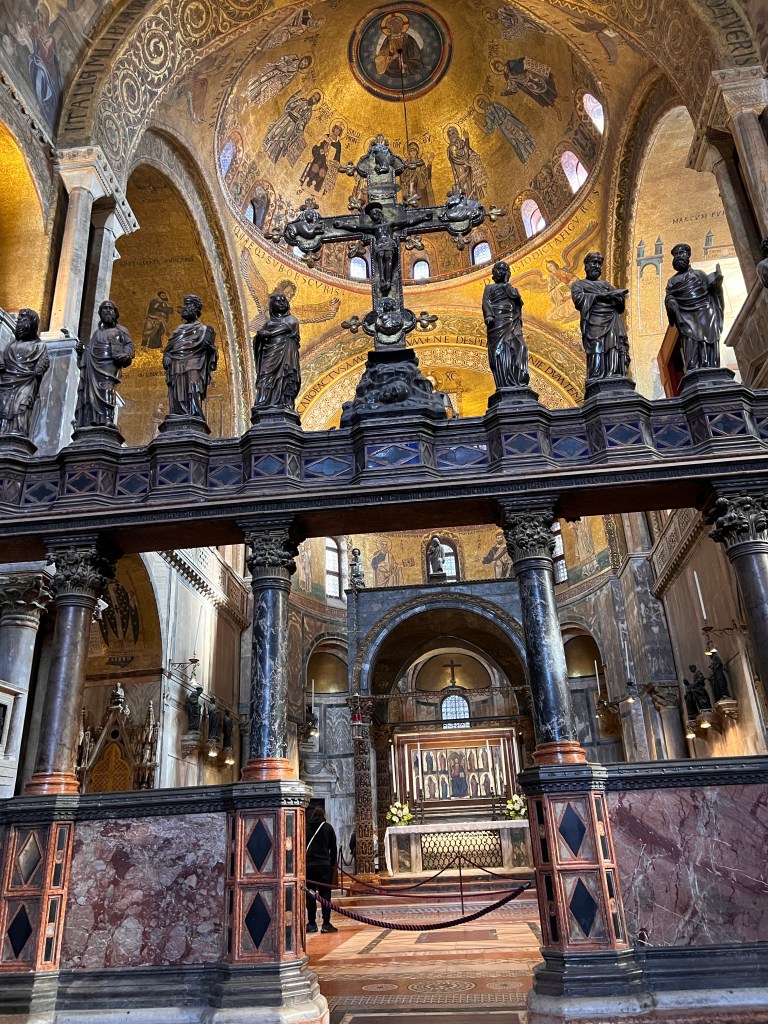Their tour guide, Francesco Conforti, looked imperial like a Roman emperor as he sat behind the wheel of his gleaming black Mercedes V-class van. The warm golden rays of the setting Tuscan sun caressed his golden curly locks as he said to the old man and his travelling companions, “Consider that you like-ah Siena so much-ah, you must take a look-ah at Lucca tomorrow, after you visit-ah Pisa.”
Francesco, suave and tall, much taller than any of the four passengers in his van, showed a muscular and towering frame, reminiscent of Michelangelo’s David in Academia Gallery, an impressive physique his thick fleecy jacket failed to hide. Francesco towered over ‘James Bond’ who was looking more worse for wear than when he was in Naples. No matter that he appeared less suave in Firenze, he and ‘Eva Green’ still remained the classy couple in the group.
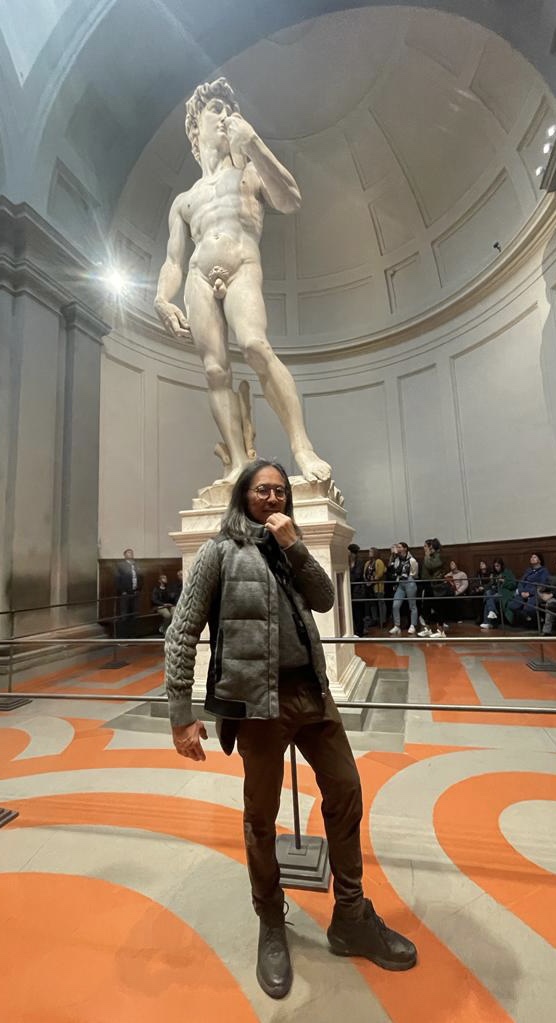
The demure ‘Eva’ with her sweet smiles and dazzling big eyes that out-dazzled even her big diamond ring, somehow oozed spades of class and sophistication despite appearing in all their holiday photos in the same black outfit. A very light traveller, she didn’t have to ponder on what to wear each day. They seemed to have fallen in love again, expectedly so, one may add, since under the Tuscan sun, not only do the Sangiovese vines, wheat and spelt spring out from the undulating terrain giving the land its stunning colours that change with every changing season, love springs eternal too for the couple.
“What’s the weather forecast for today?” the old man asked Francesco.
“You will see!” Francesco replied.
The Italian, who the old man’s Mrs said should be an actor, had the wisdom of Marcus Aurelius and the looks of Adonis. Never flustered by erratic drivers, he would wonder out loudly what was inside the mind of an errant driver.
“Don’t they know? Step by step-ah, everyone gets to where they need-ah to be,” he said wisely.
“In Italy, you drive by looking-ah at the other driver’s eyes-ah,” he added.
“To be hon-nest, traffic lights-ah aren’t common-ah because red-ah, green-ah, amber-ah is up to the driver’s imagination-ah,” he explained.
“Some drivers-ah don’t look at you,” he explained.
“They just go. You don’t exist-ah!”
At Siena, it became clear ‘James’ had lost the spring in his steps and the air of debonair in his normally charismatic mannerisms. The sore throat he was complaining about travelled with him all the way from Naples. He struggled with his luggage quite unlike a double-oh agent, oh, so clumsy he had become, tripping himself with a lazy right foot as he checked out of Naples’ Hotel Excelsior. Since even Sorrento didn’t appeal to him, it was understandable that he said all the places from Posillipo to Vomero were just eyesores.
His enthusiasm for the high life sparked briefly as they checked into Hotel Marina Riviera in Amalfi Coast as was his keen interest at how the rich people lived in Herculaneum. There, the ancient Romans showed how splendid life was even before Christ arrived on earth. Unlike Pompeii not so far away, Herculaneum was an ancient resort town, an idyllic wellness centre where the wealthy could simply adopt the ‘otium romanum’ way of life, a contemplative lifestyle of leisure and idleness to recharge oneself and pursue one’s interests such as philosophy or seek wisdom or simply lead an aristocratic culture in the countryside. Before the eruption of Mount Vesuvius in 79 A.D., the ancient people of Rome already knew how to enjoy the therapeutic benefits of thermal baths and spas in the seaside resort. There were separate spa centres for men and women and the earliest fast-food stores in the world were also discovered buried deep in volcanic mud.
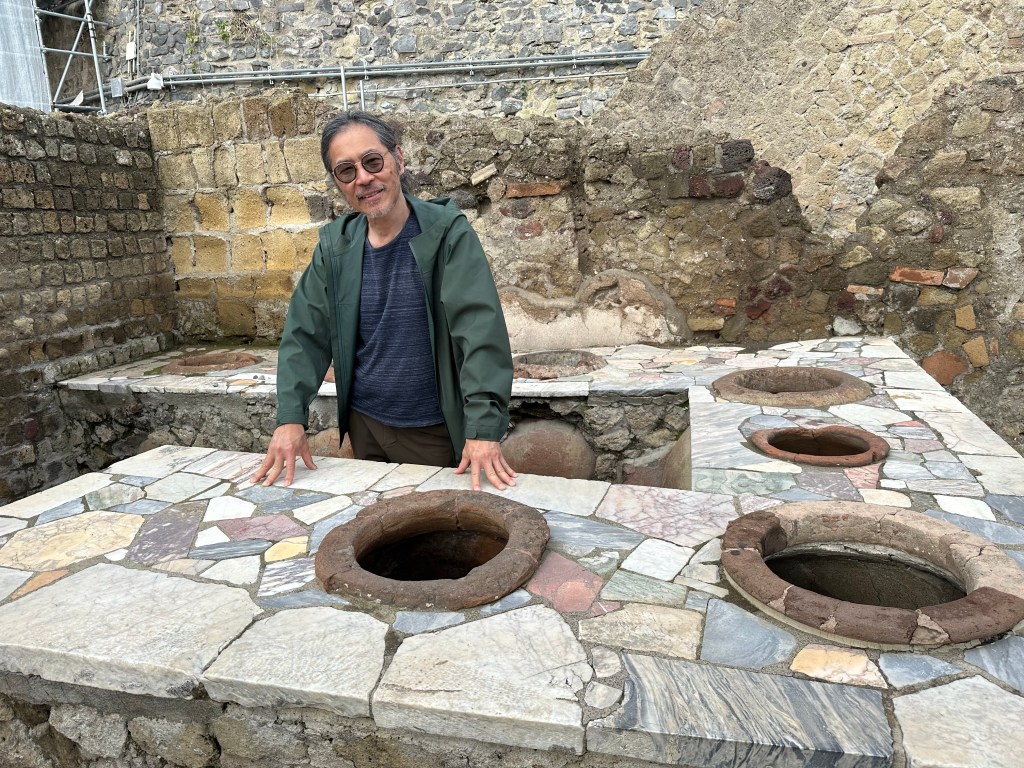
‘James’ did not enjoy the Catacombs of San Gennaro. Burial sites for the religious followers of St John did not impress him. Let the dead rest in peace was what he said to the old man, a travelling companion in his party. He swore he could still smell death in the dark limestone caves deep underground.

Massa, their black guide from the Ivory Coast who blended too well in the dark tombs, said, “Please do not dilly-dally here. You wouldn’t like to spend the night here by yourself.” Before he had finished his sentence, ‘James’ belied his physical condition and was the first to get back out into the light.

At the Grand Hotel Continental in Siena, ‘James’ was no longer just complaining about his sore throat. His coughing was gaining frequency and volume, proving Einstein’s E=mc2, the more he coughed, the more energy he expended. He felt so unwell, he had the urge to call for a doctor to visit him at the hotel on the following morning. Luckily, he didn’t or the doctor would have shown him two pink stripes on the testing kit, proving that Covid was not a myth and he would have had to isolate himself in the hotel.
But, what if the authorities had designed a new antigen test kit to test positive for any type of phlegm in one’s throat in order to sell more mRNA vaccines?
He failed to restrain his urge though in Firenze – a trait all James Bonds possess; but his urge wasn’t for some hot looking chick. The white stuff in his throat got the better of him, so he insisted that a doctor called on him at the plush Golden Tower and Spa Hotel. The hotel staff in Firenze discreetly suggested to ‘James’ that he masked up like Zorro, once the doctor confirmed he had Covid. It suited ‘James’ fine, since the hotel offered him free room service for the rest of his stay there including a complimentary bottle of Spumante which enhanced his role as double-oh seven. Oh, it even sparkled his mood. The white mask did cramp his style as no James Bond, living or dead was ever seen wearing one. Everywhere he went, ‘James’ stood out, not because of his handsome looks or his sophisticated sense of dressing but because the white accessory covering his face made him highly visible.

He missed out on their visit to the Florentine luthiers, the three generations that make up the Vettori family. The old man was very keen to meet the patriarch, Paolo Vettori, whom he incredulously succeeded in getting him to commission a copy of Guaneri del Gesu’s Ole Bull violin of 1744. The sons, Dario and Lapo, generously gave a masterclass of violin-making that took up more than two hours of their time. Later, the Vettori family threw a dinner party to welcome the visitors as family members rather than as friends, such was the amazing warmth of the Vettori clan. Grazie millie!
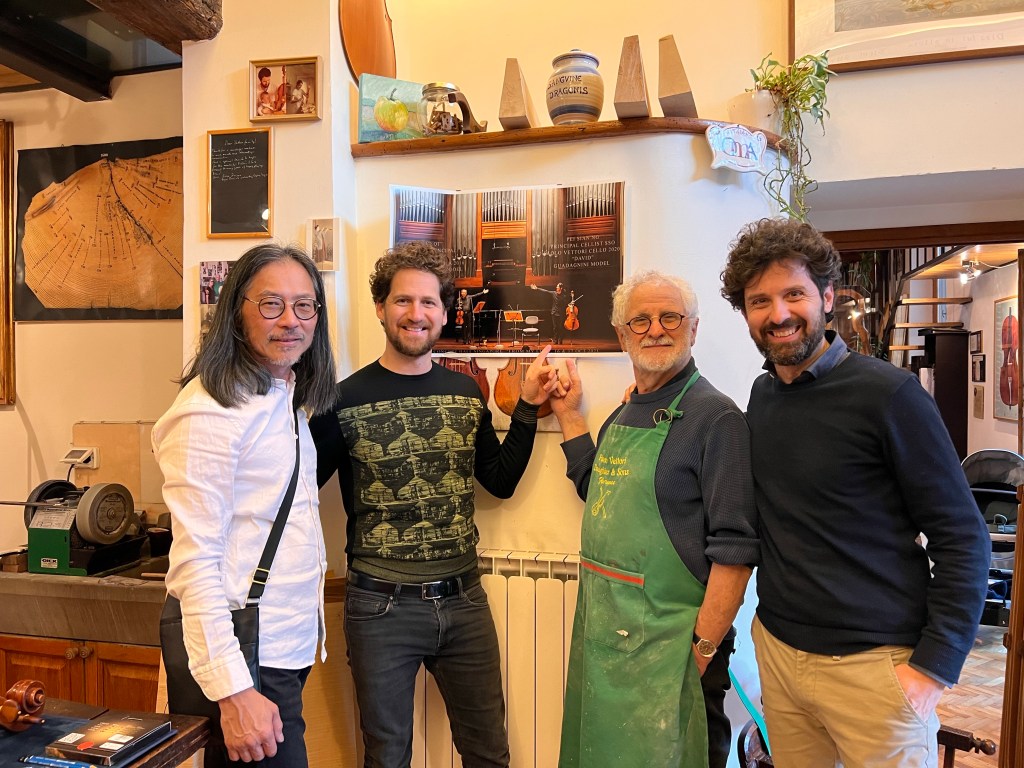
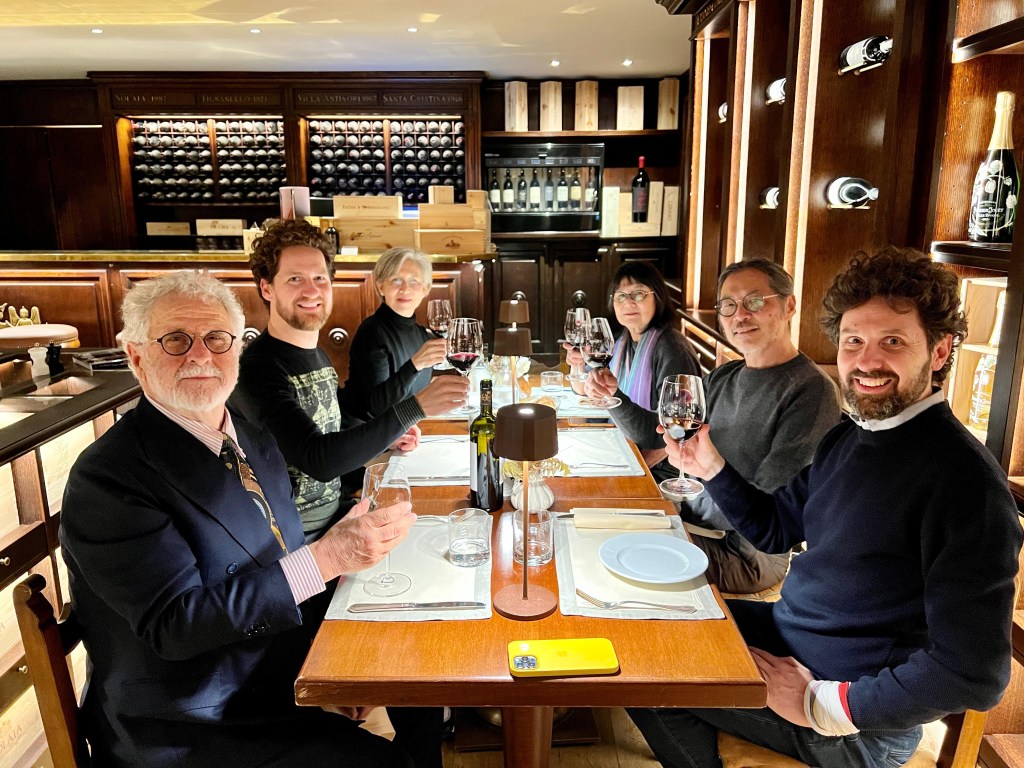
The following morning, the travellers arrived in Siena. “It’s my most favourite town in Tuscany,” the old man announced to no one in particular.
He forgot no one asked and no one cared what his favourite things in life were. ‘Eva’ said she would name her next child Siena, briefly forgetting how brief a woman’s fertility was. The old man’s Mrs was the most practical. Beauty does not rank much, if at all.
“It’s a beautiful place, but the paths are too up and down, too steep for old people,” she said.
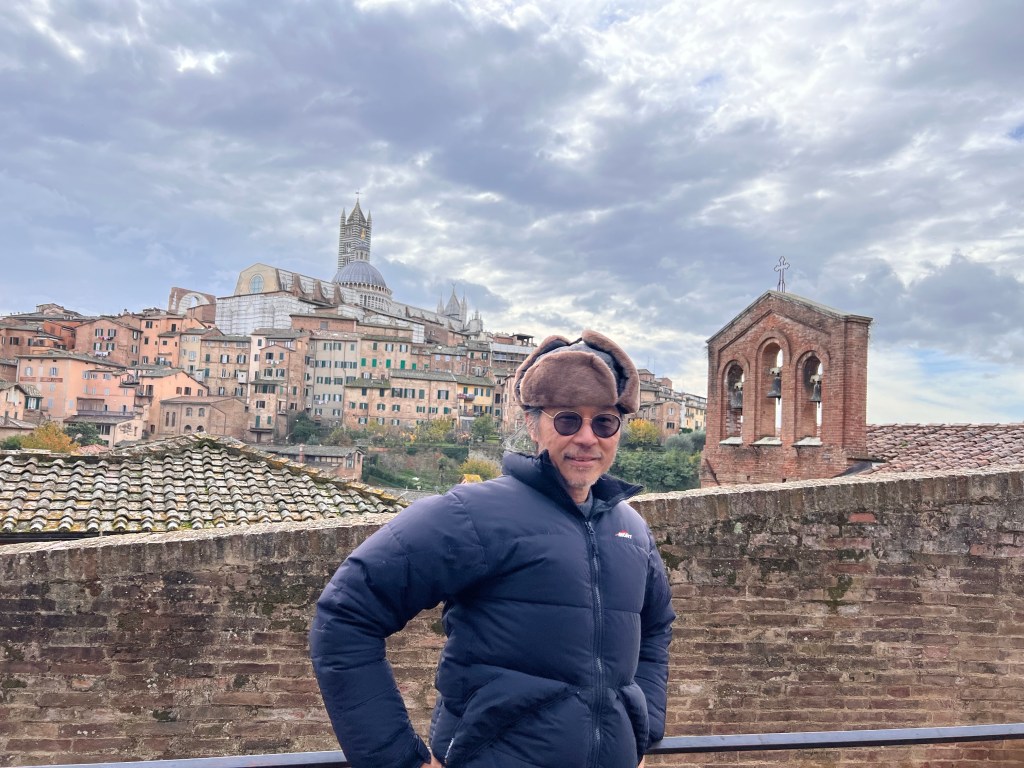
In Siena their walking tour included Piazza del Campo, Tower of Mangia, Gaia Fountain and the Duomo. Every town and every city had a duomo. Duomo here, duomo there and more duomos everywhere soon confused them about where they were. Monteriggioni was a small town so small they were glad it only had a chiesa (church) but no duomo (cathedral). The old man even discovered the reason why they built baptisteries.
From Montepulciano to Montalcino, the travelling party lacked the energy and enthusiasm that they brought with them to Italy. The missing piece that spoilt their mood affected them as much as discovering a missing piece in a jigsaw puzzle. Their energy was sapped by the lack of energy from ‘James’. He was quiet during lunch and he was absent during the wine tasting where ‘Eva’ enjoyed the Brunello di Montalcino. Lunch was a sumptuous affair at San Gimignano, at a farm close to the village with wine tastings but ‘James’ hardly had a bite of anything. The Covid patient had lost all sense of taste and was grumpy at everything that was served at the table.
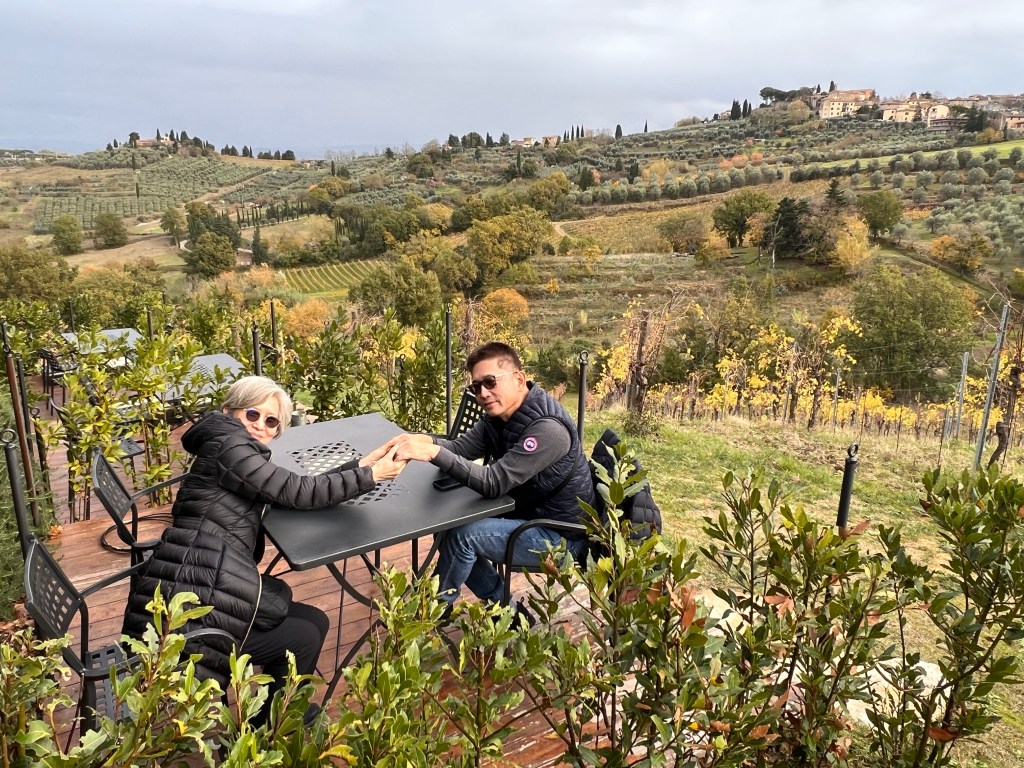
The following day, the group took up Francesco’s suggestion and toured Lucca after their morning visit to Pisa. In 1506, the port city of Pisa fell to Florence but it remains famous today because of its leaning tower. The old man was reacquainted with Galileo Galilei, who was born in Pisa. It was in the cathedral there that a young Galileo observed the effects of the pendulum from a chandelier that swung from the leaning Duomo. Later, he was to earn the wrath of the church when he supported the Copernican assertion that it was the earth that evolves around the sun and not the other way, wrongly and stubbornly championed by the Catholic Church for a further 359 years before the Pope finally apologised to Galileo! To claim that the earth was not the centre of the universe was a heresy punishable by death and Galileo was ex-communicated for having that view. Under house arrest for the rest of his life, it was said that Venice came to his rescue and his head remained intact.

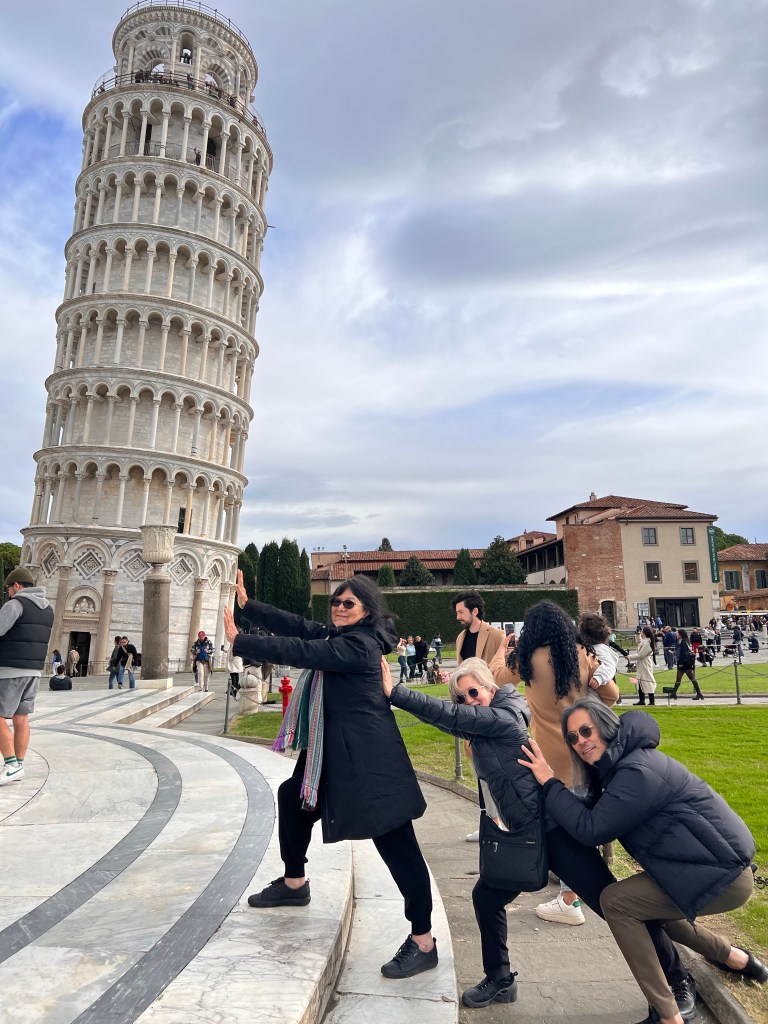
At Lucca, the birthplace of Giacomo Puccini, when Francesco was asked if he could sing any of the arias made famous by Pavarotti, he replied,” I sing like a cat crushed by a door!

“Take a last look-ah at Lucca,” Francesco said to his passengers as he sped towards Florence. Of all the places they had visited in Italy, nothing can beat the birthplace of the Renaissance. Finally, after over 900 years of the Dark Ages, the rebirth of great classical antiquity, arts, architecture and science took place right there in Firenze. The Medici way of banking and accounting were introduced during this period also. That was, of course, a misinformed historical report about the Renaissance. The old man was ill-informed to believe the Dark Ages lasted nine hundred years after the fall of the western Roman Empire in the fifth century.
He only realised that upon his arrival at Venice. There, he was amazed at the architecture, science and art being practised in the so-called Middle Ages in the great Venetian city. A treasure trove of mosaic art can be readily found in the St Mark’s Cathedral and in the Doges Palace. The splendour of art incorporating gold, precious stones and mosaic tiles used to show their wealth and power was simple mind-blowing! Dark Ages may be best to describe Europe at the time but Venice was a flourishing city where the bankers and merchants were not shy to flaunt their wealth.
